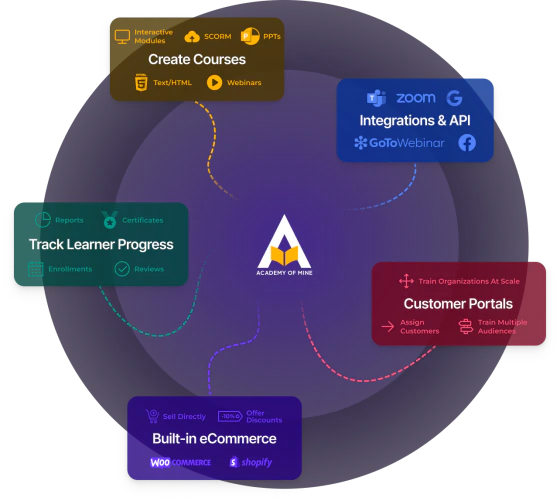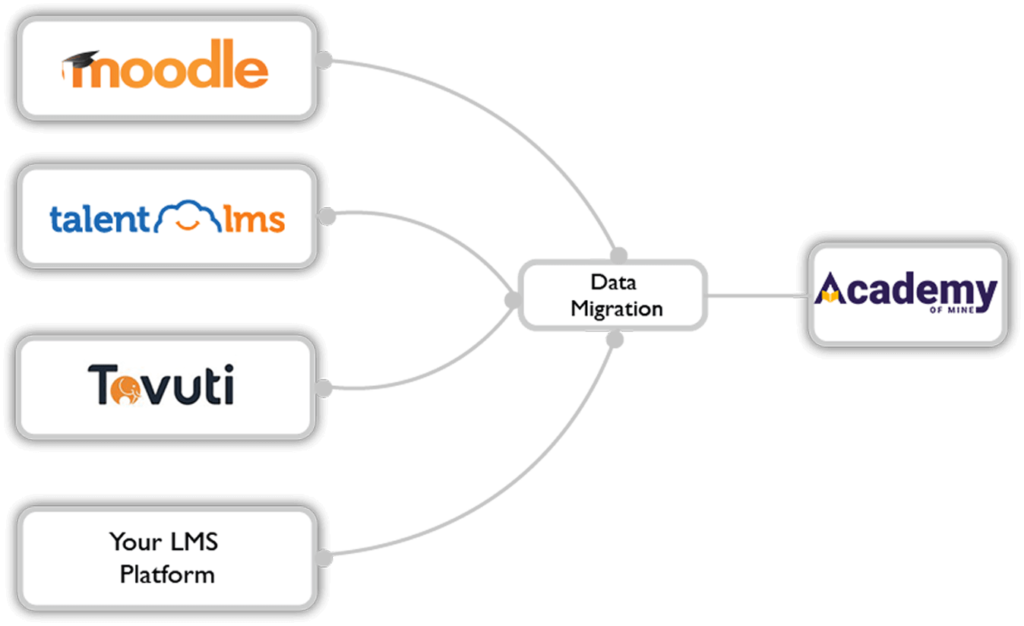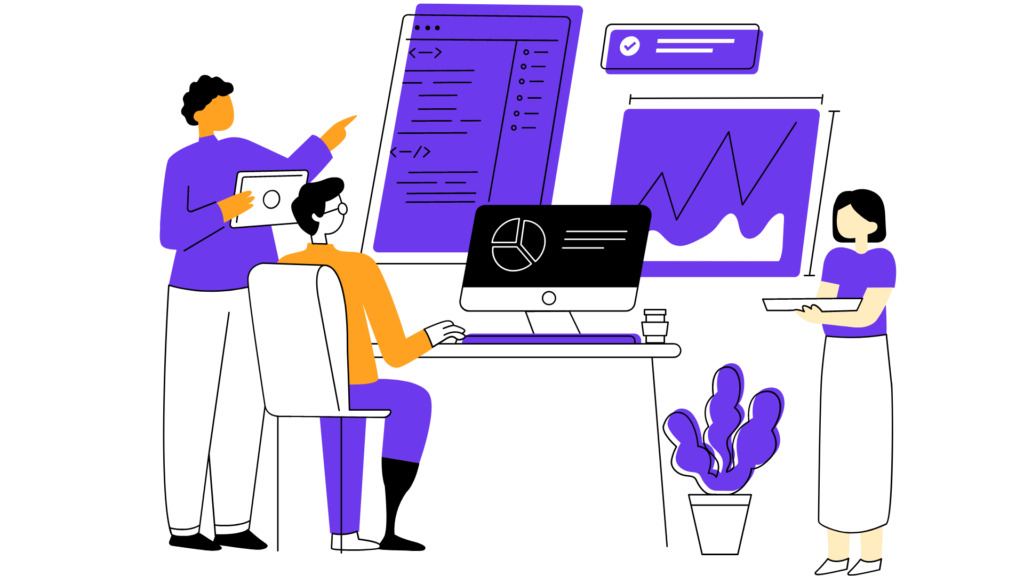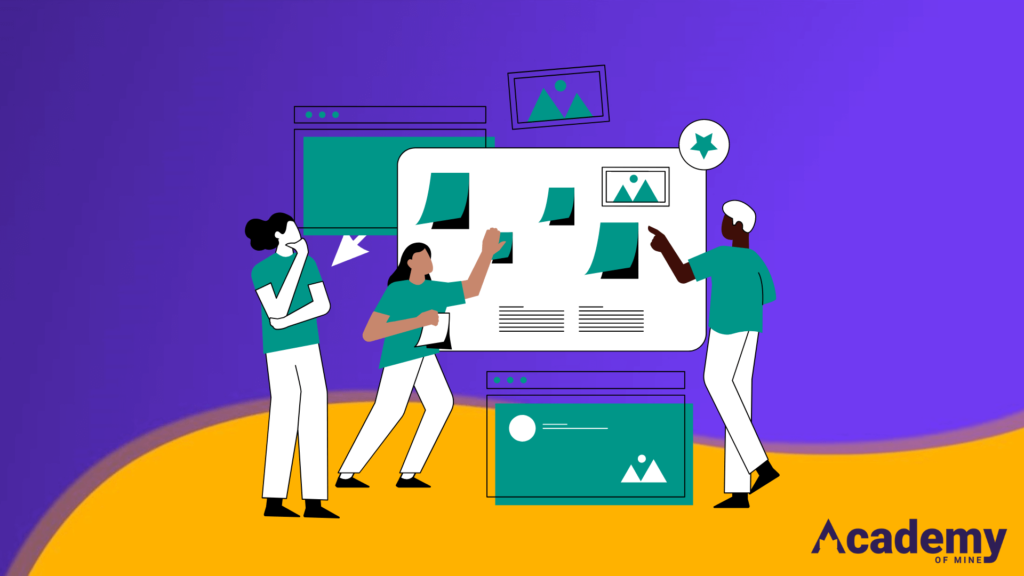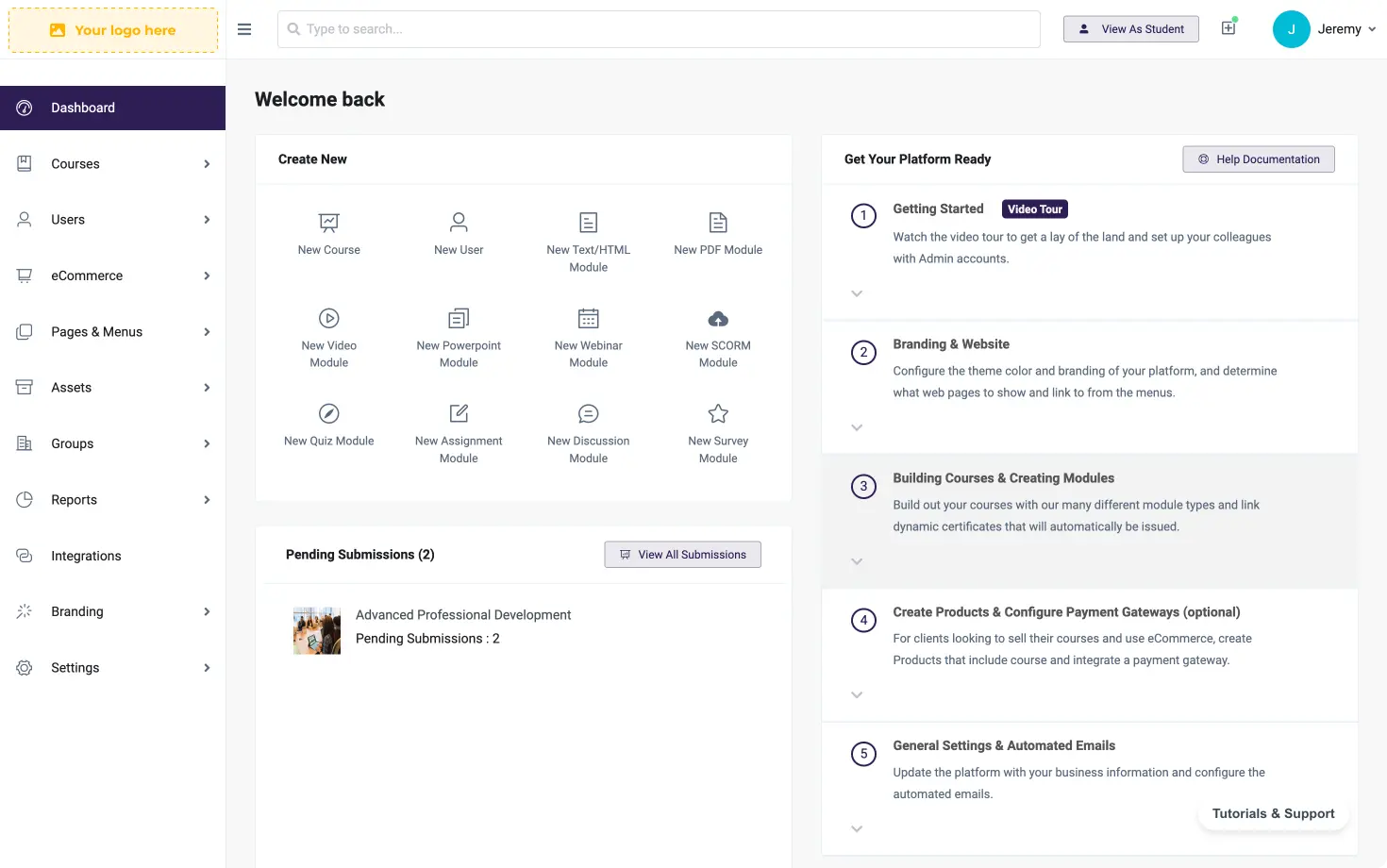eLearning Software, Learning Management System, Platform Migration
LMS Migrations: The Ultimate Guide To Switching Your LMS
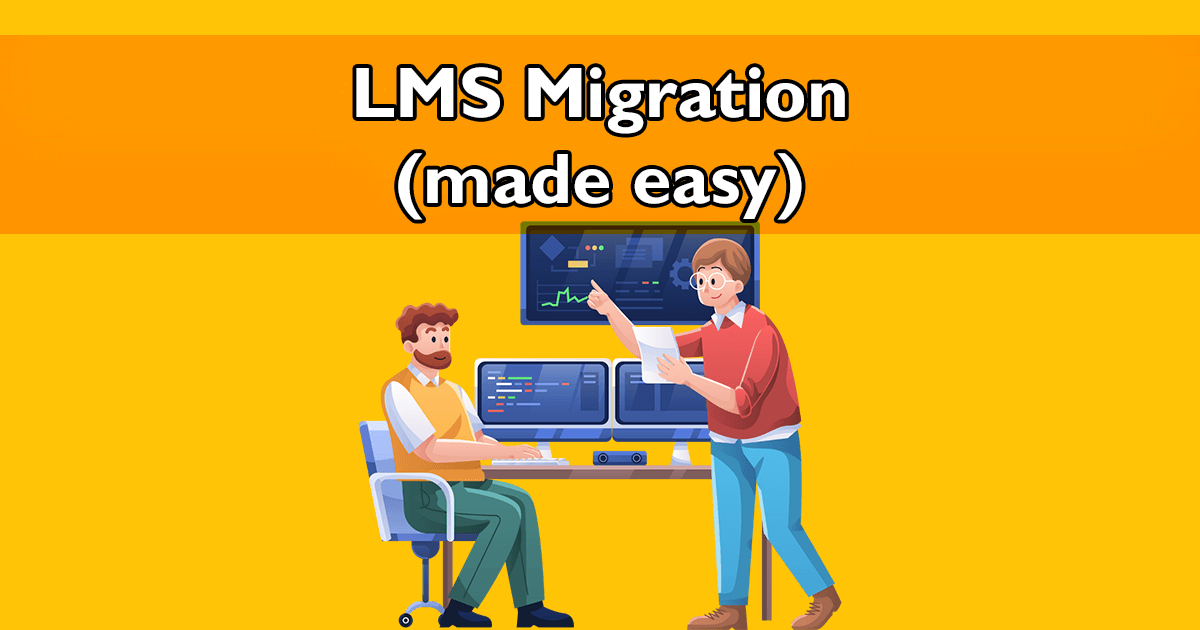
If the time ever comes that your learning management system is no longer serving you, you need to start thinking about moving LMSs. Outgrowing software is no fun—especially when the software is being actively used by 100s if not 1,000s of people in business. On the bright side, ditching an old and inefficient eLearning platform presents you with some good opportunities to review corporate programs and make improvements.
Whether you are just researching LMS migrations, or you’ve already decided on making the switch but need advice on how to efficiently migrate LMSs, this post will answer your questions!
You should get more than you bargained for out of this blog if you feel: (A) scared to get started with an LMS migration because you lack the technical knowledge, (B) confused as to what an LMS migration is, or ( C ) like you need some help moving LMSs (advice, tips, professional help).
What Is An LMS Migration?
Migrating LMSs is a process that involves moving over all of your user data and courses from one LMS to another. Migrating LMSs is a lengthy process; whether you do it yourself or pay an LMS provider such as Academy Of Mine to help, there are a number of ways you can prepare to streamline the job. The main reason companies have to migrate from one LMS to another is that their current system starts causing issues and impeding the efficacy of their training programs.
LMS issues that justify migration vary, but common ones are as follows:
- Your LMS lacks features and integrations.
- The learner and admin dashboards aren’t functioning properly.
- Your LMS provider’s customer and tech support aren’t sufficient.
- Your In-house built eLearning platform isn’t working well.
- You’re experiencing software bugs, crashes, and slowness in your LMS.
- Storage is low, or active-user limits are being reached with your current LMS.
Whether your LMS is a piece of software from a SaaS LMS provider or you built your training platform in-house, you may be experiencing issues worth considering migration. At Academy Of Mine, we’ve helped customers move to our system from WordPress sites, in-house LMS, Moodle, Talent LMS, and many other LMSs.
If you’re currently looking for a new LMS provider, check out how our platform compares to some others:
Now that you understand the gist of what an LMS migration is, let’s talk more about what justifies migration and how to know when you should switch LMSs.
When Should You Switch LMSs?
If moving your data from one LMS to another was as simple as switching phone providers and transferring your old phone’s data to your new phone, we would say go right ahead! That’s not the case though. Migrating LMSs is a long process that you should carefully prepare for, and consider working with an LMS provider to help if you’re not technically skilled. Nonetheless, how do you know when the time is right to switch LMSs?
As we already briefly explained, there are a variety of reasons why you should consider changing LMSs: they all start with your current LMS causing you some type of problems. Issues that justify thinking about an LMS migration could span from user experience to LMS slow-downs, data and user restrictions, lack of flexibility, and more. Long story short, your LMS may cause issues for your business if you’re scaling but the software is too rigid or not customizable (and able to grow with you).
At Academy Of Mine, we’ve been offering software customizations for our clients using our LMS since 2014 – this is great for preventing clients from ever outgrowing LMS. Even though we hear from clients all the time that our core LMS product is pretty nice as-is, we know that sometimes enterprises require custom development to meet their unique needs.
If getting an LMS that’s customizable sounds interesting to you, check out our pricing – let’s chat!
How Long Does Migrating To A New LMS Take?
It is essential to set a realistic timeframe for your LMS migration before you get started. The project timeline is just an estimate of how long the migration will take. However, you can make an educated guess of how long an LMS migration will take based on how much data and what type of files you’re going to be transferring to your new system. If you have to move a ton of courses and user data, and you need to recreate courses this project is more time-consuming than just moving a small portion of user data.
In our professional experience, migrations can take anywhere from 30-90 days depending on the project size. If your company has a boatload of data and courses to move into your new LMS, there are still a few things you can do to save time and money—we’re going to talk about those in the next section.
The eLearning platform you are currently using is something to consider during your migration as well. However, the sheer amount of data and files that have to be moved will tell you more. Before we go through the pre-migration checklist that you can use to save time and money on your LMS migration, you may want to organize your eLearning platform.
LMS Pre-Migration Checklist
An LMS migration doesn’t have to cost you an arm and a leg, and it won’t if you do the right preparation and planning. Now let’s discuss a checklist you can follow to save time and money while moving everything over to your new learning platform.
Your company can benefit from using this LMS pre-migration checklist whether you plan to migrate LMSs yourself or get help from professionals with experience.
Steps to prepare for your LMS migration
- Take inventory of courses, content, and user data that needs to be moved.
- Confirm what content formats your new LMS supports (SCORM, xAPI, etc.)
- Identify which courses and data are going to be left in the old system.
- Figure out what courses need to be recreated with an authoring tool.
- Confirm whether any new courses or processes need to be created for the new LMS – like needing to change the way a self-paced course is designed.
By cross-referencing what eLearning content standards are supported in your new LMS with your current courses, you can figure out what courses need to be recreated with an authoring tool. When it comes to SCORM, remember that there are multiple versions, and not every LMS supports the same ones. For example, you may have some SCORM courses that need to be transferred over, but your new platform doesn’t support the same version of SCORM that your content is authored in.
What an LMS provider does to prepare for your LMS migration
Assuming you decided to get our help during your LMS migration, we would pick up where you left off in the LMS pre-migration checklist and do all of the heavy liftings. Additionally, here are a few more things we like to do before beginning data migration:
- Identify what platform you are migrating from.
- Identify current LMS features gaps.
- Check out LMS front-end pages for eCommerce (if relevant).
- Do a headcount on the number of courses, lessons, quizzes, questions, and assignments that are being migrated.
- Confirm if any eCommerce products will need to be migrated.
- Double-check user data.
- Identify transaction data like course progress and certificates that need to be moved.
By leaving the technical aspects of data migration to eLearning experts, you avoid a lot of costly mistakes during the LMS migration. This is especially true since LMS developers are experienced with the files and data structures in Learning Management Systems.
You should still do your diligence following the pre-migration checklist so that migration experts don’t waste time and charge you for unnecessary work!
How Academy Of Mine Handles LMS Migrations (4 steps)
Following the initial data cleanup in your old system, there’s a specific approach to LMS migrations that we have a lot of experience using. These four steps are an overview of the process we take at Academy Of Mine to get all your data and courses securely running in our system after preparations are done. The result: you are up and running in your new LMS in no time!
Of course, if you prefer to migrate LMSs without our help, these steps will still greatly help you!
1. Requirement Discussion
This stage is all about discussing your existing system and current business model, then creating the requirements for the project. If you’ve prepared for the switch following the pre-migration checklist, we can go through project requirements at lightning speed.
2. Get Access To Your Data
During this stage, you provide our development team with access to your current platform so we can get another look at all of your content and data structures. This helps us understand what your LMS migration is going to cost based on technical work and project details.
3. Statement Of Work (SOW)
During this step, we double and triple-check your data, content, and project requirements before sending you a Statement Of Work that includes project timelines, costs, and migration details. The details in the SOW are subject to change, but we’ve done tons of migrations for clients, and we make sure these are as accurate as possible.
If you agree to the SOW, your dedicated customer success manager will hold your hand every step of the way! Our goal with the SOW is to lay down the groundwork to make sure the migration goes smoothly and is implemented as quickly as possible for you!
4. Data Migration
Finally, we begin migrating data from your old platform to the Academy Of Mine LMS. If there’s a lot of data, a phased approach may apply. At this stage, you would be well aware of how long the process is expected to take; the more courses and data – the more time this takes.
Part of our final step of data migration is testing the functionality of your courses and training programs in the new LMS. Whether you take a phased approach or an all-in-one approach to data migration with us, our team will work with you to make sure you’re 100% satisfied with your new platform. Unlike when importing data into a new LMS by yourselves, with our help, you’re guaranteed to not have to worry about broken modules, mismatched data, or glitches!
Tips For Crushing Your LMS Migration
While migrating from one eLearning platform to another seems like a job you should dread—when done right—LMS migrations give you an opportunity to rethink training programs and make improvements.
Here are 8 things you can do to make improvements during an LMS migration:
- Get rid of old courses.
- Purge old user data and files that are no longer relevant.
- Prioritize which features and integrations need to be better in your new LMS. These may be better than your old system by default, or custom development may be required.
- Update content or structure in old courses.
- Connect with business tools that weren’t integrated with the old LMS.
- Convert Instructor-led training into eLearning courses
- Analyze your learners’ feedback to identify gaps in the learning experience
- Update visual branding, eCommerce, and marketing aspects of your LMS.
Let’s Get Your New LMS Set Up Today!
Although switching LMSs isn’t something we expect you to wake up one day and jump out of your socks over, there are tons of benefits to LMS migrations when done correctly! We hope after reading this you have more clarity on how to efficiently migrate LMS. Bringing us to our final question for you – are you technically prepared and ready to handle the LMS migration yourself? Or do you need professional help?
If you’re curious about how to get started with a more effective LMS today, give us a call!
